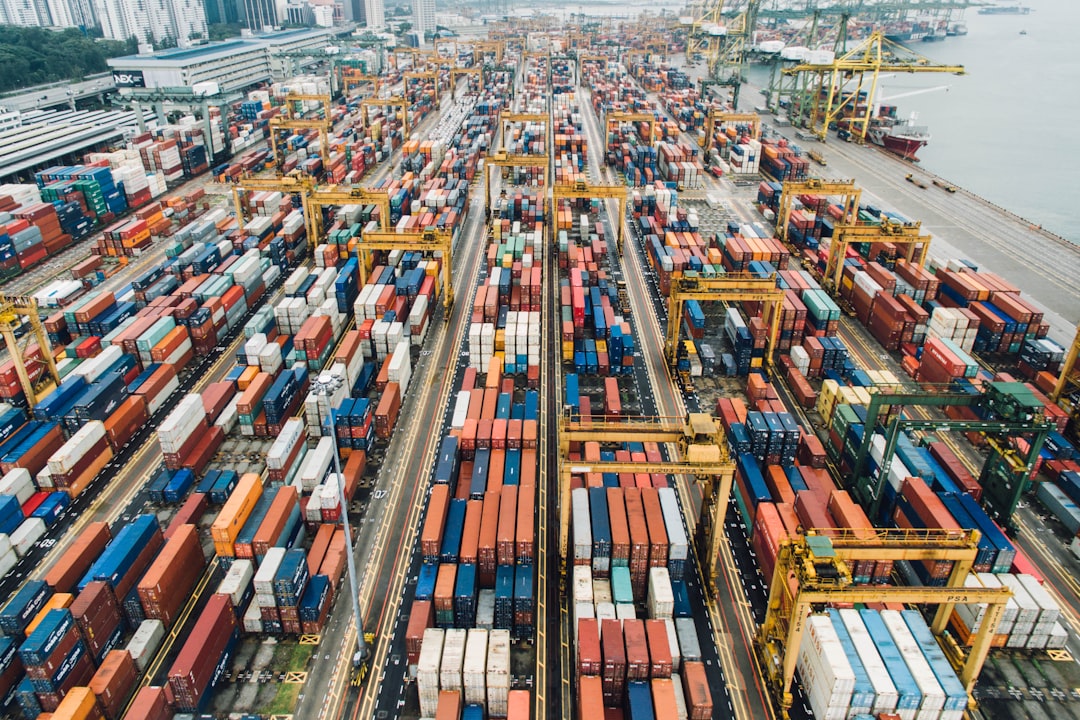China’s Taiwan Invasion Scenario: The $5 Trillion Economic Bomb

Military analysts warn that a Chinese invasion of Taiwan could trigger the most devastating economic crisis in modern history, potentially wiping out $5 trillion from global markets within weeks. Taiwan produces over 90% of the world’s most advanced semiconductors, which power everything from your smartphone to modern cars. Bloomberg Economics estimates that a conflict would instantly halt chip production, causing supply chain disruptions that make the COVID-19 shortages look minor. Major tech stocks like Apple, NVIDIA, and Tesla would likely plummet as production lines worldwide grind to a halt. The shipping lanes around Taiwan handle about 88% of the world’s largest container ships, meaning global trade would face immediate paralysis. Your investment portfolio, retirement savings, and even basic consumer goods prices would feel the impact within 24 hours of any military action.
The Great Middle East Oil Shutdown: When Crude Hits $200

Geopolitical tensions in the Middle East could trigger an oil crisis that makes the 1970s energy shocks seem tame by comparison. Iran has repeatedly threatened to close the Strait of Hormuz, through which 21% of global petroleum passes daily according to the U.S. Energy Information Administration. A complete shutdown would instantly remove about 21 million barrels per day from global markets, sending oil prices skyrocketing to potentially $200 per barrel. Goldman Sachs analysts project that such a scenario would push gasoline prices above $7 per gallon in the United States within weeks. The ripple effects would devastate airlines, shipping companies, and any business dependent on transportation, while your monthly fuel and heating costs could triple overnight. Energy stocks might initially surge, but the broader economic recession that follows would crush most other investments.
Europe’s Natural Gas Winter: The Energy Apocalypse

Russia’s ongoing manipulation of natural gas supplies has created a ticking time bomb for European economies, with potential global spillovers that could devastate your finances. Current gas storage levels across Europe hover around 85% capacity heading into winter 2024-2025, but any supply disruption could trigger emergency rationing. The International Energy Agency warns that a complete Russian gas cutoff during peak winter demand could force energy prices up by 400% across Europe. German industrial giants like BASF and Volkswagen have already warned of potential plant shutdowns, which would ripple through global supply chains. European government debt is soaring as countries spend billions subsidizing energy costs, potentially triggering a sovereign debt crisis. Your investments in European markets, energy ETFs, or even U.S. companies with significant European operations could face massive losses within days of a supply crisis.
China’s Property Market Collapse: The $60 Trillion House of Cards

China’s real estate sector, worth an estimated $60 trillion, represents the largest asset bubble in human history and its collapse could trigger a global financial meltdown. Property development accounts for nearly 30% of China’s GDP, with major developers like Evergrande and Country Garden already defaulting on hundreds of billions in debt. The ripple effects extend far beyond China’s borders, as Australian iron ore, Canadian lumber, and German machinery exports all depend heavily on Chinese construction demand. Morgan Stanley estimates that a full property sector collapse could reduce global GDP by 2-3%, while commodity prices would crash and emerging market currencies would face severe pressure. Your retirement funds likely have significant exposure to Chinese markets through international equity funds, while commodities-based investments would face immediate selling pressure. The interconnected nature of global finance means that even U.S. regional banks with exposure to Chinese debt or trade finance could face serious losses.
The Great Cyber Attack: When Digital Money Disappears

Cybersecurity experts warn that a coordinated attack on global financial infrastructure could freeze trillions of dollars in assets and leave millions unable to access their money. The 2024 CrowdStrike outage, which disrupted banking systems worldwide for just hours, offered a glimpse of how fragile our digital financial system really is. Nation-state hackers from Russia, China, and North Korea have already demonstrated the ability to penetrate major banks, with the 2024 attacks on Chinese banks highlighting vulnerabilities in the SWIFT payment system. A successful attack on key financial messaging systems could halt international transactions for days or weeks, freezing your ability to access bank accounts, credit cards, or investment portfolios. The Federal Reserve estimates that a major cyberattack could trigger bank runs and force emergency closures of financial markets. Your digital assets, online banking, and even mobile payment apps could become completely inaccessible, leaving you with only physical cash during the crisis.
Climate Tipping Point: The $23 Trillion Carbon Crash

Scientists warn that we’re approaching irreversible climate tipping points that could trigger massive financial losses as carbon-intensive assets become worthless overnight. The Bank for International Settlements estimates that up to $23 trillion in fossil fuel assets could become “stranded” as governments implement emergency climate policies. Recent extreme weather events have already cost insurers over $100 billion annually, with major companies like State Farm pulling out of high-risk markets in California and Florida. A sudden policy shift toward aggressive carbon pricing could devastate oil companies, utilities, and heavy industry, while flooding and extreme weather could make entire regions uninvestable. Your investment portfolio likely contains significant exposure to climate-vulnerable assets through index funds, pension plans, and real estate investments. The transition could happen faster than markets expect, leaving investors who don’t adapt quickly facing catastrophic losses as entire industries become obsolete.
India-Pakistan Nuclear Standoff: The Unthinkable Market Crash

Rising tensions between nuclear-armed India and Pakistan over Kashmir and water rights could trigger the first nuclear crisis since the Cuban Missile Crisis, with devastating consequences for global markets. Both countries possess over 150 nuclear warheads each, and recent border clashes have escalated beyond typical diplomatic tensions. India’s economy, now the world’s fifth-largest, and Pakistan’s strategic location controlling key trade routes mean that any conflict would immediately disrupt global supply chains. Financial markets would likely experience their worst single-day losses in history, potentially exceeding the 1987 Black Monday crash or the 2008 financial crisis. The psychological impact alone would trigger massive capital flight from emerging markets, while defense stocks might see temporary gains before the broader economic collapse takes hold. Your international investment funds, particularly those focused on Asian markets, would face immediate and severe losses as investors flee to perceived safe havens like U.S. Treasury bonds.
The Great Supply Chain Snap: When Global Trade Dies

A perfect storm of geopolitical tensions, climate disasters, and infrastructure failures could trigger a complete breakdown of global supply chains, making the COVID-19 disruptions look minor. The Ever Given’s 2021 Suez Canal blockage, which cost global trade $9.6 billion per day, demonstrated how fragile our interconnected shipping system really is. Current tensions around key chokepoints including the Suez Canal, Strait of Hormuz, and South China Sea could simultaneously disrupt over 60% of global maritime trade. Major retailers like Walmart and Amazon have warned investors about their vulnerability to supply chain disruptions, while manufacturing companies face potential production halts within days of key component shortages. The ripple effects would immediately impact everything from food prices to electronics availability, while shipping and logistics stocks would face extreme volatility. Your daily expenses would skyrocket as imported goods become scarce, while companies dependent on global supply chains could see their stock values collapse overnight.
The Dollar’s Decline: When America’s Money Loses Its Crown

Central banks worldwide are quietly reducing their dollar reserves and exploring alternatives, setting the stage for a potential collapse in the dollar’s global dominance that could devastate American finances. China and Russia have accelerated their de-dollarization efforts, with bilateral trade in yuan and rubles reaching record levels in 2024. The BRICS nations are developing alternative payment systems that bypass the dollar-dominated SWIFT network, while gold purchases by central banks hit a 55-year high in 2023. A sudden loss of confidence in the dollar could trigger massive capital outflows from U.S. assets, causing Treasury bond yields to spike and stock markets to crash. Your savings accounts, bonds, and dollar-denominated investments would lose purchasing power rapidly as inflation surges and the cost of imports skyrockets. The Federal Reserve would face the impossible choice between raising interest rates to defend the dollar or keeping them low to support the domestic economy, either option potentially triggering a severe recession.
Banking System Meltdown: The Next Lehman Brothers

Hidden leverage and risky investments in the global banking system have created conditions eerily similar to 2008, but potentially much worse given the interconnected nature of modern finance. Regional banks in the United States are sitting on over $600 billion in unrealized losses from bonds purchased when interest rates were near zero, according to Federal Reserve data from 2024. The collapse of Silicon Valley Bank and Credit Suisse in 2023 revealed how quickly modern bank runs can unfold in the digital age, with deposits fleeing within hours rather than days. European banks remain heavily exposed to commercial real estate and emerging market debt, while Chinese banks face mounting losses from the property sector collapse. A failure of a major global bank could trigger a cascade of losses through derivatives markets, potentially freezing credit worldwide and forcing governments to choose between massive bailouts or economic collapse. Your deposits above FDIC insurance limits, money market funds, and bank stocks would face immediate risk, while credit cards and loans could become unavailable as banks desperately try to preserve capital.
Space Weather Catastrophe: When the Sun Attacks Your Portfolio

Solar storms and geomagnetic events pose an underestimated threat to global financial systems that depend entirely on satellite communications and electronic infrastructure. The 1859 Carrington Event, the most powerful geomagnetic storm in recorded history, would cause an estimated $2.6 trillion in damage if it occurred today according to NASA scientists. Modern society’s dependence on GPS satellites, internet communications, and electronic trading systems means that a major solar storm could instantly disable global financial markets. The National Academy of Sciences warns that power grid failures from space weather could last months or years, while satellite networks that enable everything from credit card processing to high-frequency trading would be completely disrupted. Your ability to access bank accounts, make electronic payments, or trade stocks would disappear overnight, while companies dependent on satellite communications would face immediate operational paralysis. The psychological impact of such a technologically-driven crisis could trigger panic selling and bank runs even in areas where basic infrastructure remains functional, amplifying the economic damage far beyond the initial technical disruption.
Did you expect that your financial security could vanish so quickly from events happening thousands of miles away?



